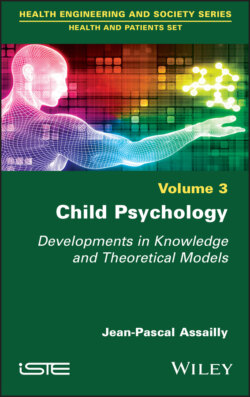Читать книгу Child Psychology - Jean-Pascal Assailly - Страница 37
1.5.2. Theoretical models on the influence of culture on development
ОглавлениеA great many theoretical models exist to explain the influence of culture on the child: Bronfenbrenner’s ecological systems model (1977), Whiting’s psychocultural research model (1977), Vygotsky’s sociocultural-historical theory (1980), Harkness and Super’s developmental niche model (1994), Weisner’s ecocultural model (2002), Rogoff’s transformation of participation approach (2003), Keller’s ecocultural model of child development (2013) and Worthman’s bioecocultural model of child development (2010).
A general characteristic of these models is that they all seek, in one way or another, to contextualize child development as a dialog between the individual and the various social, ecological and cultural inputs he or she receives.
Harkness and Super’s model, for example, focuses on three elements: the physical and social environments in which the child lives, child education and child care customs and the psychology of caregivers. The authors, and others, have used this framework to assess how parents’ ethnic theories of child development help shape practices, such as daily infant routines, and how these practices in turn influence child behaviors, such as patterns of play and social interaction.
Similarly, Bronfenbrenner’s (1977) ecological systems model, undoubtedly the best-known theoretical development framework, provides a guide for examining how the immediate, internal and external environments in which children live shape their development, with particular attention paid to individual differences, such as temperament, and the ever-changing nature of these pathways over time.
This framework has been used to examine a wide range of behaviors, for example, bullying and peer victimization among youth in the United States, in order to assess how microsystems such as parent–youth relationships, exosystems such as exposure to media violence and macrosystems such as religion all contribute to child behaviors and beliefs.
However, the concept of “culture” is a confusing one; in Bronfenbrenner’s model, the child sits in concentric spheres of cultural influence, with macro- and microsystems influencing his or her development. However, separation of the individual from his or her culture can be problematic, as culture is not separate, but rather a product of human activity (Rogoff 2003).
Indeed, development is a continuous process by which people are transformed by participating in culture, and their participation in turn transforms culture itself; the distinction between biology and culture is also flawed, as they are not alternative influences, but inseparable aspects of the system in which individuals develop. More contemporary conceptualizations thus attempt to position development in both cultural and biological contexts.
